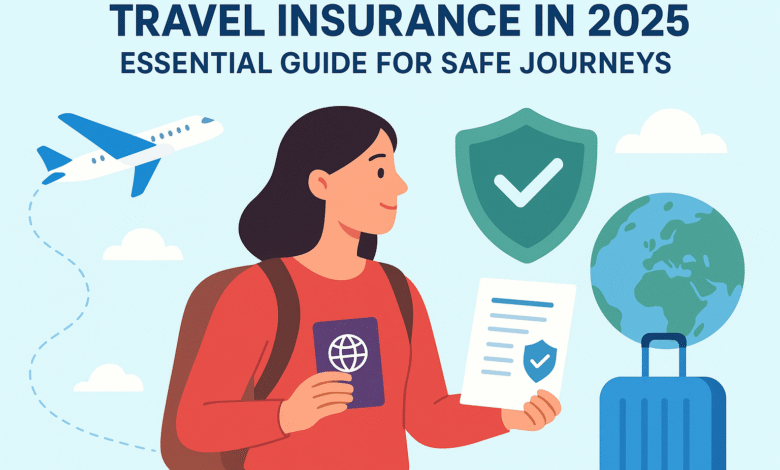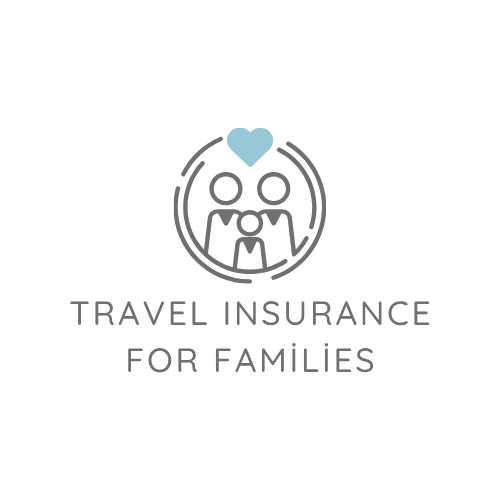Travel Insurance in 2025: Essential Guide for Safe Journeys
Travel Insurance in 2025

Traveling in 2025 offers exciting opportunities, from exploring new cultures to visiting family during the holiday season. Yet unexpected events—canceled flights, medical emergencies, or lost luggage—can disrupt plans and strain finances. Travel insurance provides a safety net, protecting travelers from these risks. This guide covers the basics of travel insurance, key coverage options, costs, and tips for choosing the right plan as of September 2025.
Table of Contents
- What Is Travel Insurance?
- Types of Travel Insurance Plans
- Key Coverage Areas to Consider
- Factors Influencing Travel Insurance Costs
- How to Select the Best Policy
- Common Pitfalls to Avoid
- Final Thoughts
What Is Travel Insurance?
Travel insurance is a policy that covers financial losses or medical issues related to travel. It applies to domestic and international trips, offering protection against cancellations, delays, or health problems. In 2025, the demand for travel insurance has grown due to unpredictable weather, rising healthcare costs abroad, and evolving travel restrictions.
A typical policy includes:
- Trip cancellation/interruption: Reimburses nonrefundable costs if you cancel or cut a trip short.
- Medical coverage: Pays for healthcare abroad or emergency evacuation.
- Baggage loss: Compensates for lost, stolen, or delayed luggage.
- Travel delay: Covers extra expenses like meals or lodging if delayed.
Not all risks are covered. Pre-existing medical conditions or high-risk activities (e.g., skydiving) often require additional riders. Understanding these limits helps travelers plan effectively.
Types of Travel Insurance Plans
Policies vary based on trip duration, destination, and coverage needs. Here are the main types available in 2025:
- Single-Trip Insurance: Covers one trip, ideal for vacations or holiday travel. Common for trips lasting up to 30 days.
- Multi-Trip (Annual) Insurance: Protects multiple trips in a year, suited for frequent travelers or business professionals.
- Cruise Insurance: Includes cruise-specific risks like missed ports or onboard medical care. Popular for Caribbean or Mediterranean cruises.
- Long-Stay Insurance: Designed for trips over 30 days, such as study abroad or extended vacations.
- Adventure Travel Insurance: Covers high-risk activities like skiing or scuba diving, with higher premiums.
In 2025, some insurers offer “cancel for any reason” (CFAR) add-ons, allowing cancellations for non-covered events (e.g., changing your mind). These cost 40–50% more but provide flexibility amid uncertain travel conditions.
Key Coverage Areas to Consider
A well-rounded policy balances cost and protection. Evaluate these areas:
Trip Cancellation and Interruption
This reimburses prepaid, nonrefundable costs (e.g., flights, hotels) if you cancel due to illness, death in the family, or severe weather. Coverage typically ranges from $10,000 to $50,000 per person. For 2025 holiday travel, check if strikes or political unrest are covered, as these risks have risen.
Medical and Emergency Evacuation
Healthcare abroad can cost thousands. Standard medical coverage offers $50,000–$100,000, while evacuation coverage ranges from $250,000 to $1 million. In 2025, costs have increased due to inflation and complex repatriation needs. Ensure coverage includes pre-existing conditions with proper documentation.
Baggage and Personal Items
Lost or delayed luggage can ruin a trip. Policies cover $1,000–$3,000 for lost items and $200–$500 for delays after 12–24 hours. Valuable items (e.g., cameras, jewelry) may need extra coverage. Document belongings with photos before traveling.
Travel Delays
Delays due to weather, mechanical issues, or missed connections qualify for reimbursement. Coverage often starts after 6–12 hours, paying $150–$200 per day for meals, hotels, or transport. In 2025, frequent delays at major hubs like London Heathrow make this essential.
Additional Options
- Rental Car Coverage: Protects against collision or theft, often overlapping with car rental agency options.
- Accidental Death and Dismemberment: Pays a lump sum for severe injuries or death, typically $10,000–$50,000.
- CFAR Add-On: Allows cancellation for any reason, reimbursing 50–75% of costs if purchased early.
Factors Influencing Travel Insurance Costs
The average cost of travel insurance in 2025 is 4–8% of the trip cost, depending on coverage. For a $5,000 trip, expect $200–$400. Key factors include:
- Trip Cost: Higher trip values increase premiums. A $10,000 cruise costs more to insure than a $2,000 weekend getaway.
- Destination: High-risk areas (e.g., regions with political instability) raise rates. Medical costs in the U.S. or Switzerland also drive up prices.
- Trip Length: Longer trips (e.g., 30+ days) cost more due to extended exposure.
- Age and Health: Older travelers (over 65) or those with medical conditions face higher premiums.
- Coverage Level: Adding CFAR or high medical limits increases costs. A basic plan is cheaper but less comprehensive.
Discounts apply for booking early, bundling with other insurance, or traveling with family. Compare quotes from multiple providers to find savings.
How to Select the Best Policy
Choosing the right plan requires careful consideration. Follow these steps:
- Evaluate Your Needs: Assess trip cost, destination risks, and health concerns. A beach vacation needs less than a mountain trek.
- Compare Quotes: Use sites like InsureMyTrip or Squaremouth to get quotes from multiple insurers. Look beyond price to coverage details.
- Read the Fine Print: Check exclusions (e.g., pandemics, extreme sports) and claim processes. Confirm pre-existing condition waivers.
- Check Insurer Reputation: Review ratings from J.D. Power or customer feedback for claims handling.
- Buy Early: Purchase within 10–14 days of booking for better rates and CFAR eligibility.
In 2025, online tools let you customize plans instantly. Test different combinations to match your budget and itinerary.
Common Pitfalls to Avoid
Travelers often make mistakes that leave them unprotected:
- Skipping Insurance: Assuming credit cards or airlines cover all risks leads to gaps. Credit card coverage is limited and often secondary.
- Buying Too Late: Policies bought close to departure may exclude pre-trip cancellations. Buy within two weeks of booking.
- Overlooking Exclusions: Not reading policy terms misses critical gaps, like non-covered medical conditions.
- Underinsuring: Low coverage limits (e.g., $10,000 medical) won’t cover major emergencies abroad.
- Ignoring Local Laws: Some countries require specific insurance (e.g., Schengen visa health coverage). Check entry rules.
Final Thoughts
Travel insurance in 2025 is a vital tool for safe and stress-free journeys, especially with holiday travel peaking in late December. Understanding policy types, coverage areas, and cost factors helps you select a plan that fits your trip. Review your policy before departure and keep contact details handy. For general guidance on travel coverage options, email safepolicynow4@gmail.com.




